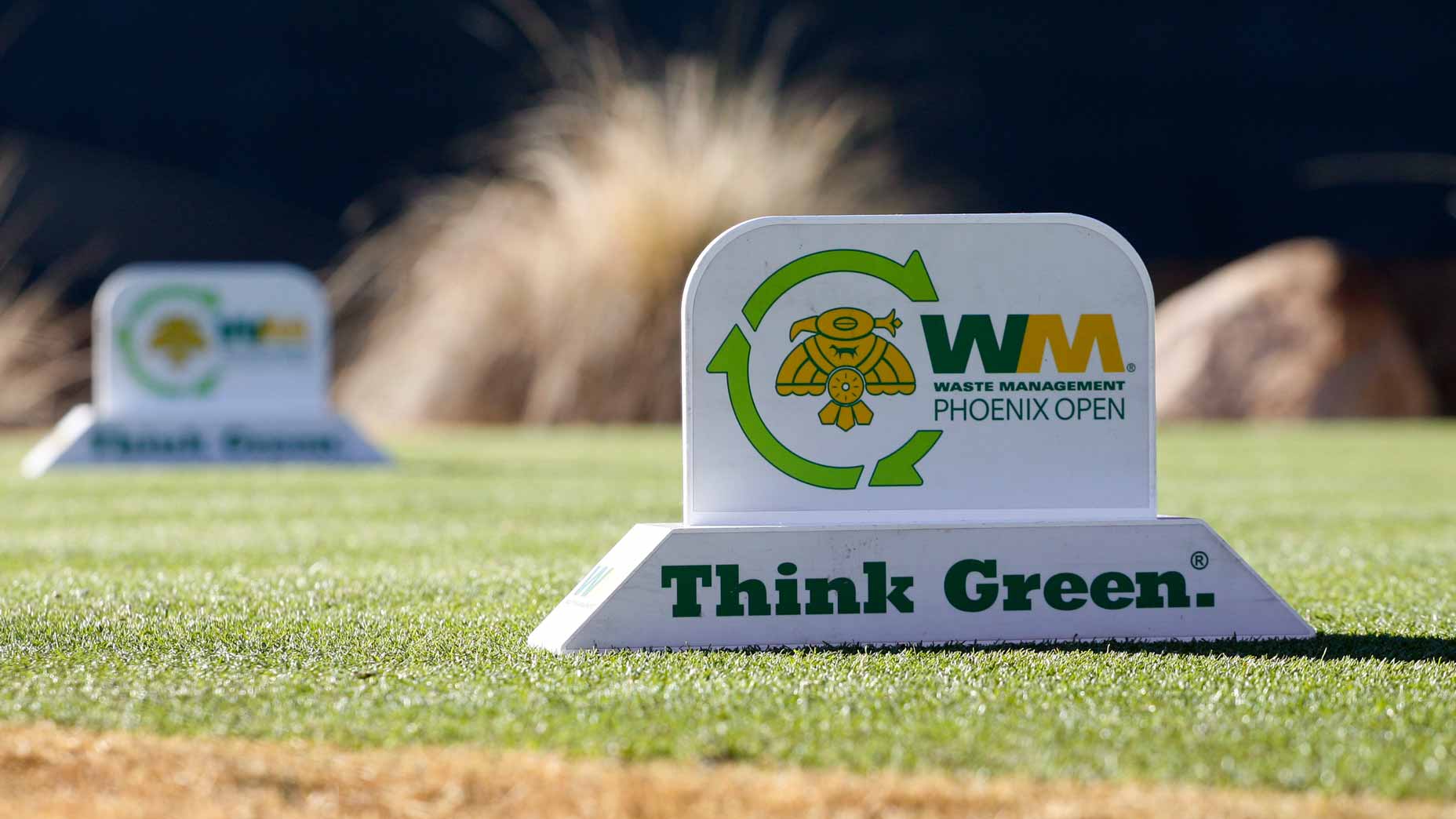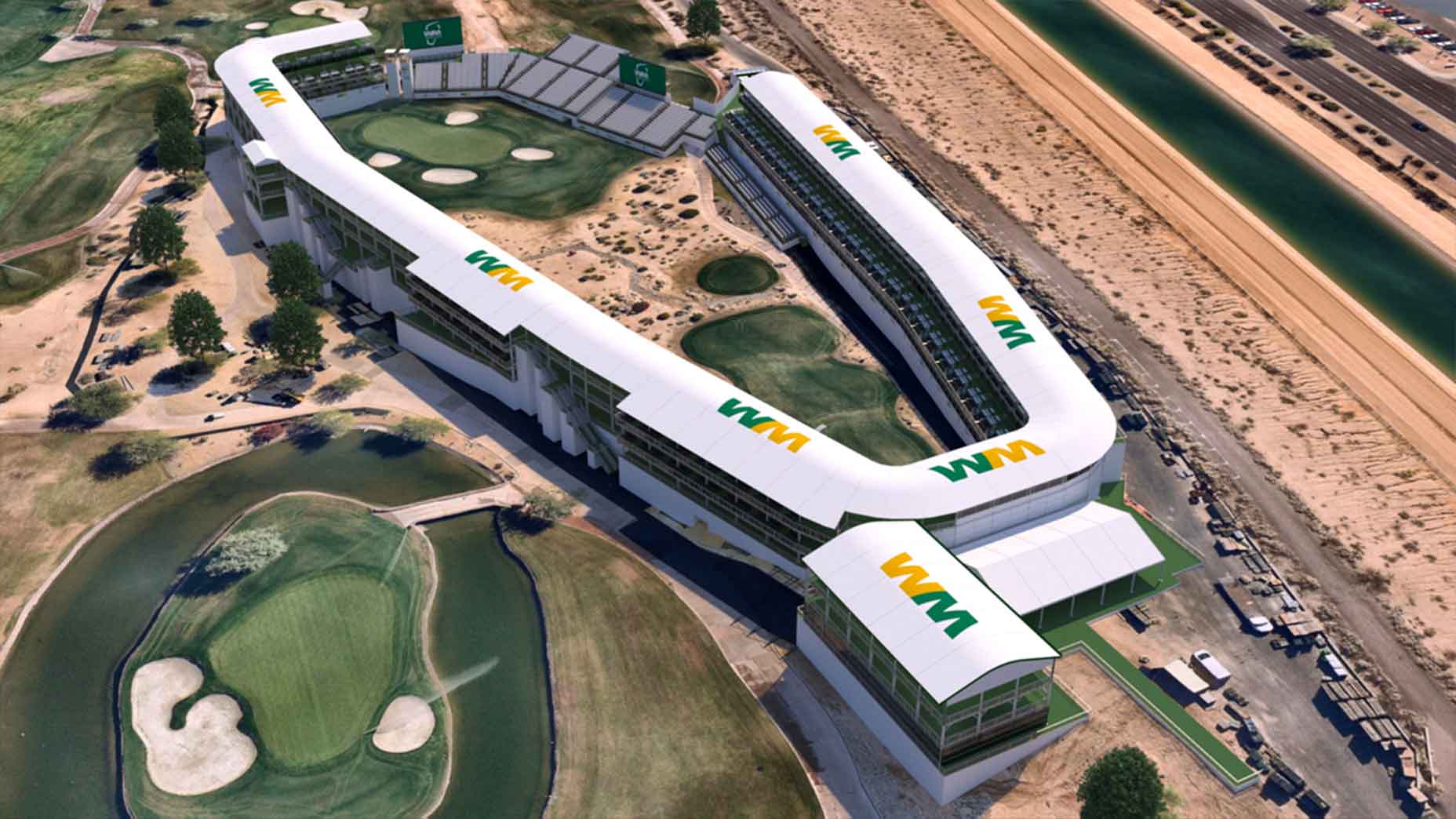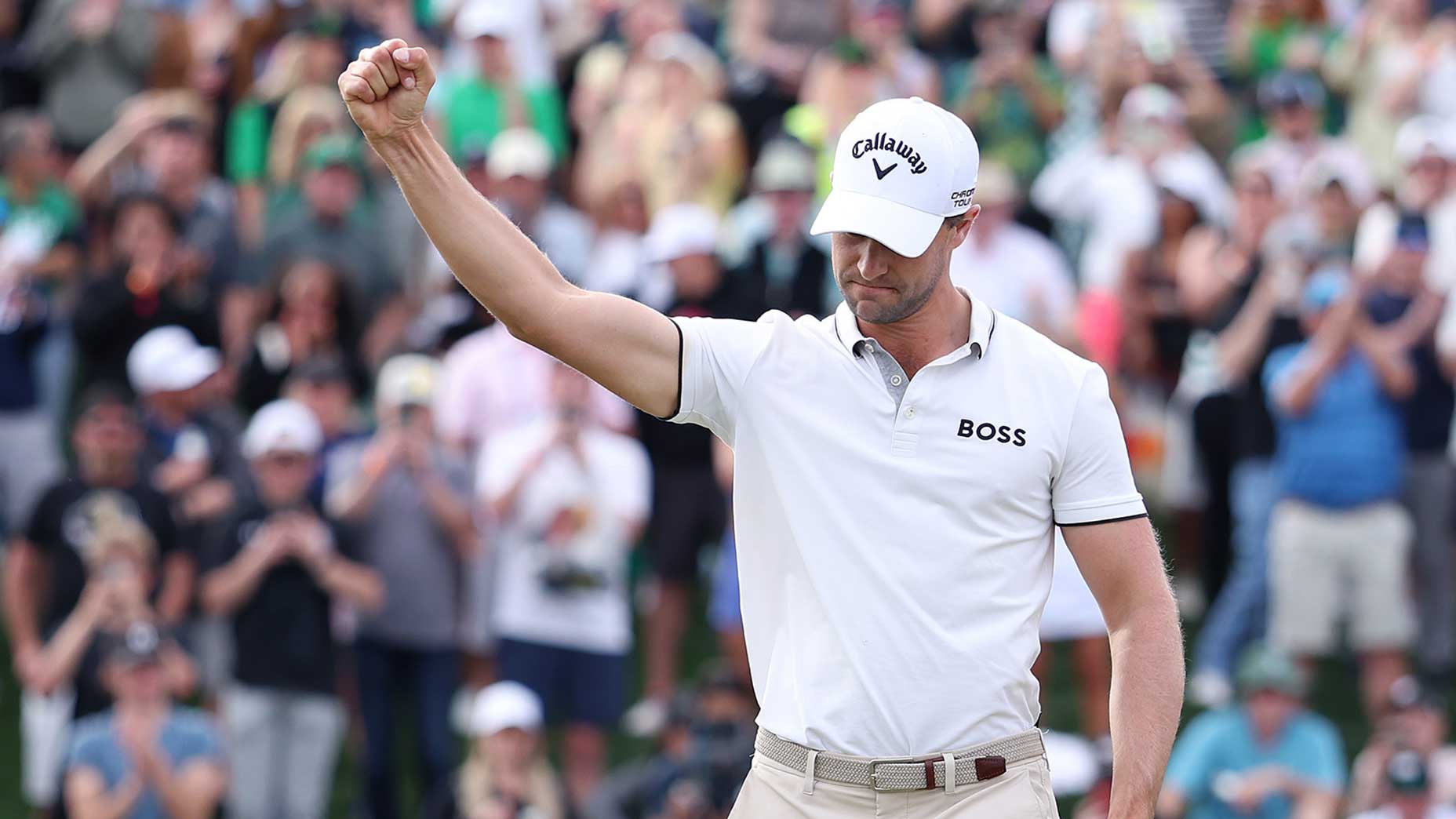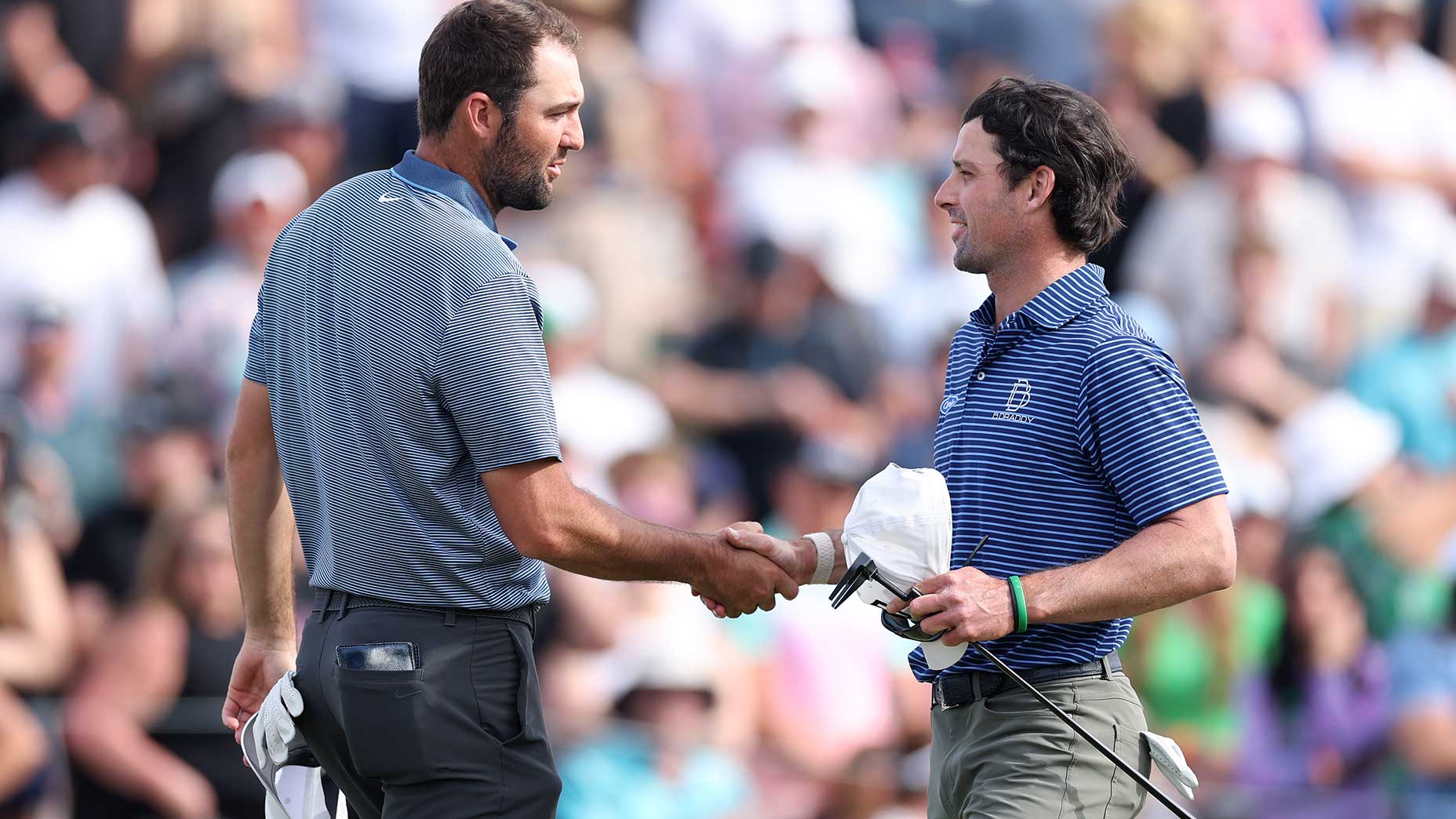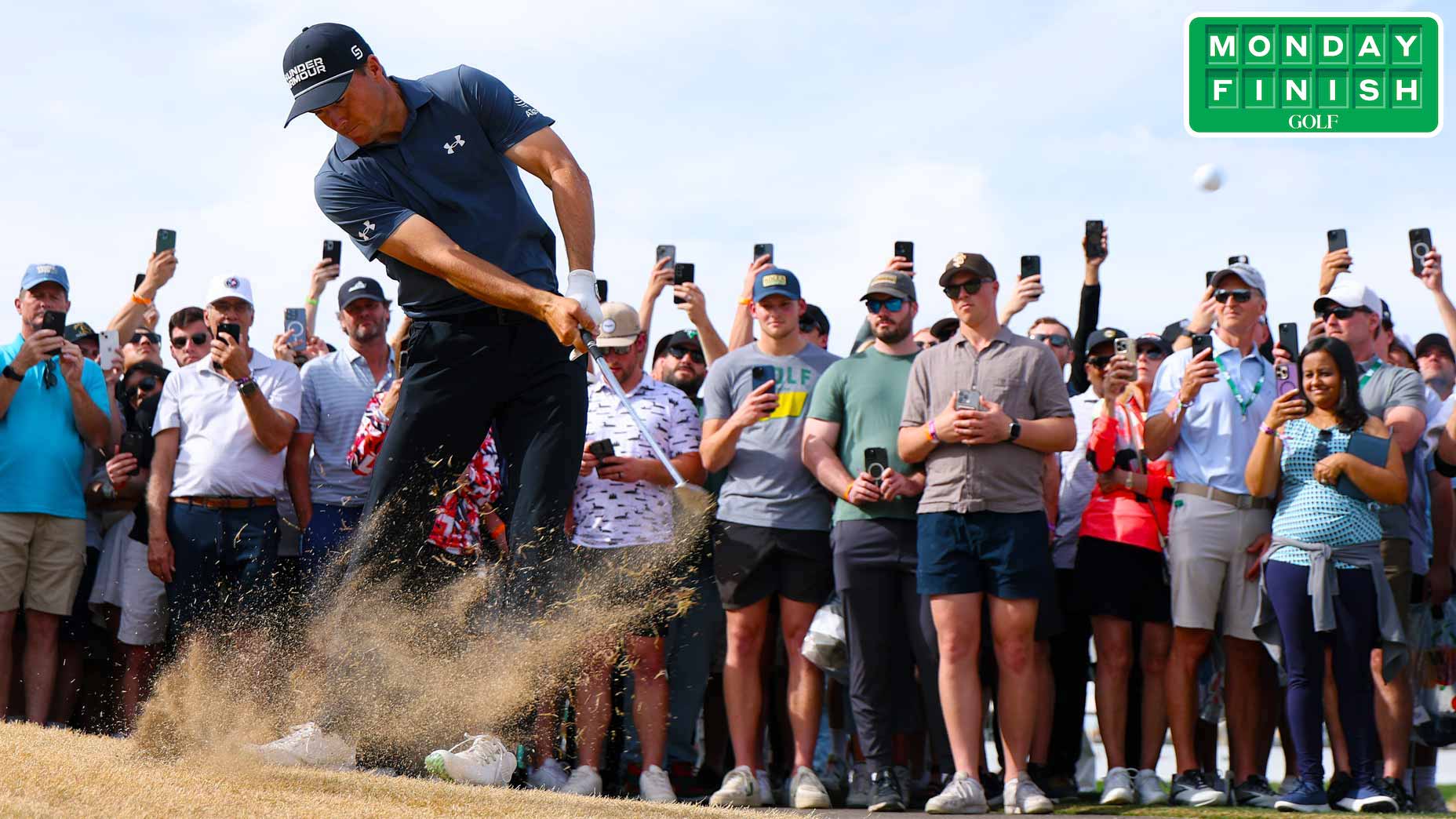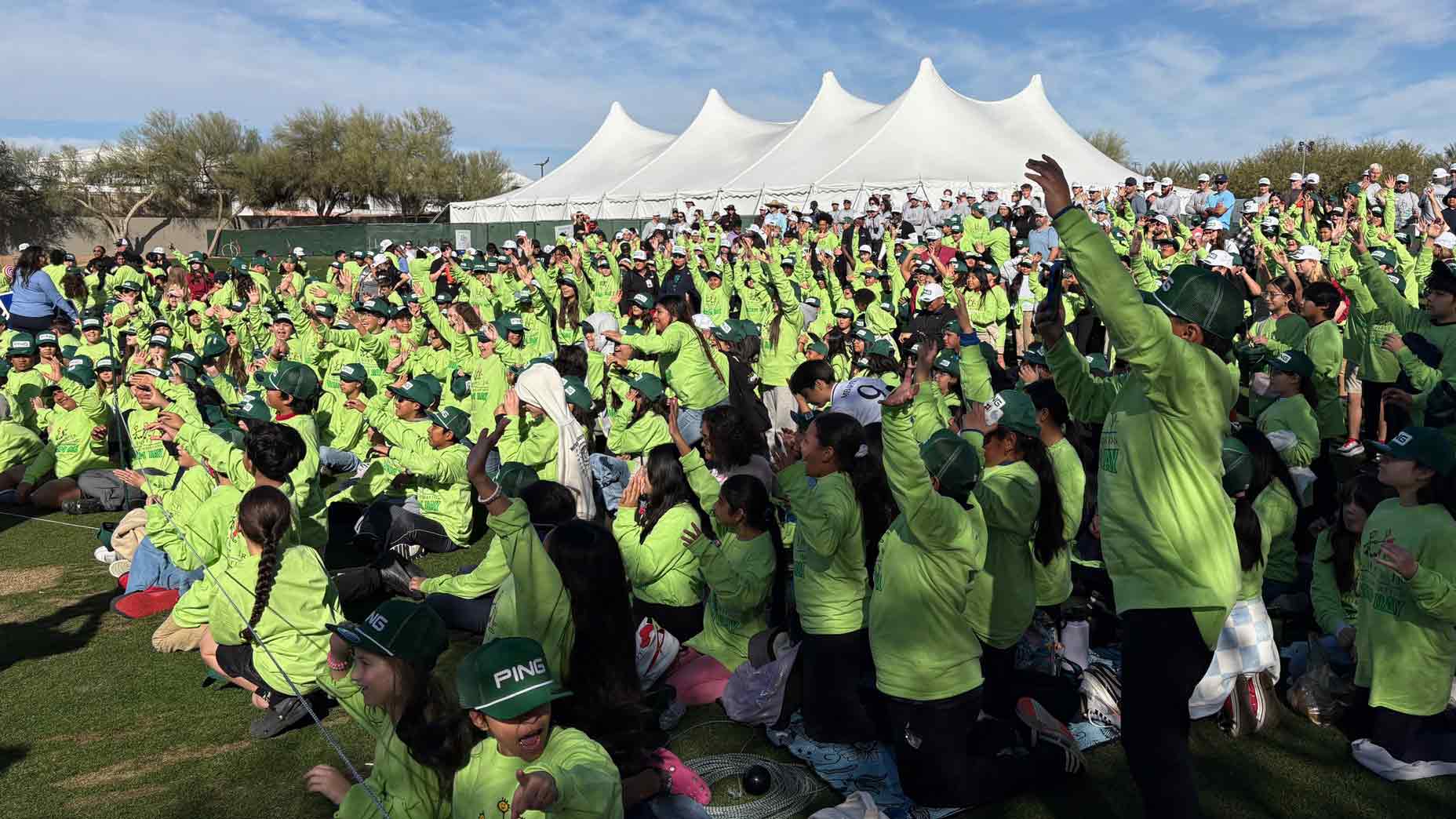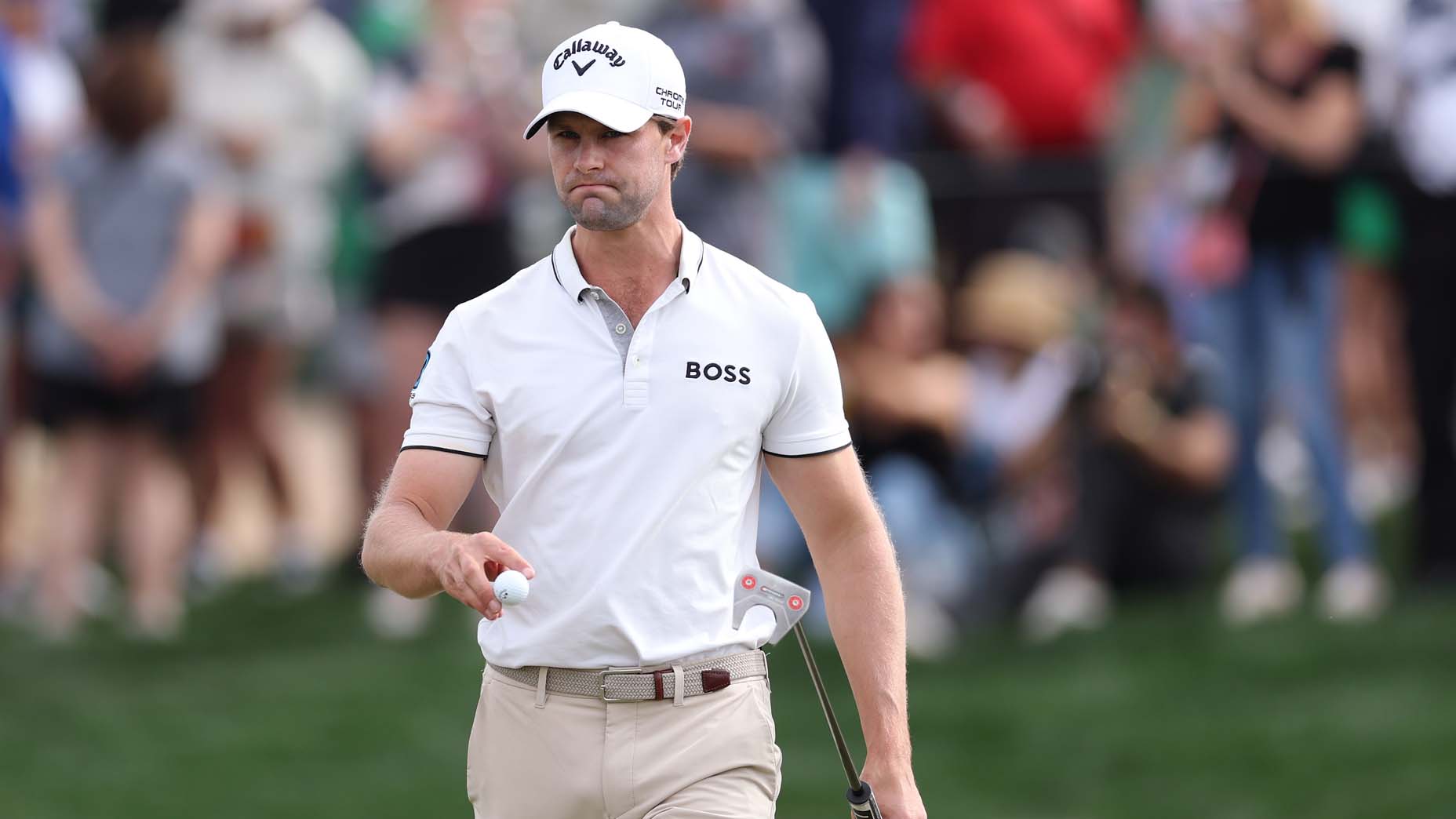There’s a big-time change happening at the WM Phoenix Open this year.
Players were informed via bulletin of the following:
“All alcohol service on the 16th hole will be served in a plastic cup — commemorative cup for Beer and Seltzer drinks and normal plastic cups for mixed drinks.”
That’s the sort of shift we’ve gotten used to at this tournament. It’s a sensible one, too, after aluminum showers dominated TPC Scottsdale’s iconic par-3 last year. But these are the singular challenges of Phoenix Open week. Players wonder how they’re supposed to putt when all of that is going on. Fans wonder if they should make a mid-morning transition from tequila to High Noon. Tournament organizers wonder if they should add another bleacher and another beer tent to go with it.
Boiled down: How big is the party and how much bigger can it get?
But this week’s event catches the PGA Tour answering even bigger, more existential questions. What’s the purpose of our existence? What are we doing here? How can we be better? (Enthusiastic tournament attendees may be asking yourselves those same questions when Sunday morning hits. Hang in there.) This WM Phoenix Open represents the Tour’s answer to those questions. It marks the Tour’s first full-field “designated event,” which means the WM has its strongest field ever. It’s offering its largest prize ever, too, a $20 million payday that would have wowed pros a year ago.
The Super Bowl is kicking off just down the road, offering untold celebrity/athlete crossover hype opportunities. And Sunday marks the debut of Netflix’s new docuseries, Full Swing, which the Tour hopes will boost interest from existing fans and attract new ones, too.
In other words, it seems like a good time for the Tour to launch its new product. How’s it gonna go?
If you build it, will they come?
Let’s start with this idea of “designated events.” The Tour has chosen to gather as many of its top players as possible for its 17 biggest tournaments, which include the majors (that gets us to four) the Players (5), the invitationals (Riviera, Bay Hill and Memorial gets us to 8), the playoff events (three events gets us to 11), the season-opening Sentry (12) and the remaining World Golf Championship (the Match Play in Austin) which gets us to 13. Four additional events were added to that list, including this week’s WM Phoenix Open.
“When we started talking about trying to elevate or designate some events, I think this was one of the first ones on the list, just because it’s such a fan favorite and players love the atmosphere,” Rory McIlroy said on Wednesday.
But the Tour hasn’t been completely consistent in its embrace of the change. What were first trumpeted as “Elevated Events” are now just lowercase “designated events.” At a tournament where Beer and Seltzer have both earned dubious capitalization (see above), this series of massive rotating events has not. This muddies the waters; defining “designated events” to non-golfing friends is a multi-step process.
If Tour leadership seems somewhat bashful about boosting up some events, that’s likely because elevating some means relegating others. Last week’s AT&T Pebble Beach Pro-Am, for instance, got buried in the schedule, stuck the week before back-to-back designated events (this week in Phoenix plus next week’s Genesis Invitational). And it’s still not clear how different this year’s fall schedule — initially pitched as an offseason of sorts, inserted to make us hungry for star-powered golf tournaments come springtime — will end up looking.
But that’s the reality of the situation. Weakening some events only pays off if those that are strengthened more than make up for it. TV ratings never tell the full story, but there’s no question the Tour is hoping for improvement after sagging numbers at its January events. They’ll have this week’s CBS viewership number circled, no doubt. I’d argue they could still help themselves by further emphasizing the big-time events, though; fans will take their cues from the Tour’s messaging but it’s still not clear if we should be focused on a 17-event schedule or a 45-event schedule.
2023 WM Phoenix Open: How to watch, TV schedule, streaming, tee timesBy: Kevin Cunningham
A large number of people will attend in person; that’s a certainty. They’re already attending in person, for that matter, heckling athletes, celebrities and businesspeople while they sip from their commemorative plastic cups beside the 16th green during Wednesday’s pro-am. They’ll attend in droves on Thursday and Friday and especially Saturday, too, most of ’em thrilled to be at the day’s biggest party and some of them excited about the fact that there are golfers here who usually skip this week, like Rory McIlroy. Speaking of which…
Who’s here — and who isn’t?
Nearly every top PGA Tour player is in attendance at TPC Scottsdale. That’s no surprise, given the Player Impact Program mandates they play every designated event (with one skip each). But it’s still significant to have 18 of the top 20 players (missing only Cameron Smith and Will Zalatoris) in the World Ranking.
That includes Rory McIlroy and Jon Rahm, who have each been waging epic campaigns for the title of best golfer in the world. McIlroy has won his two most recent starts on Tour: the Tour Championship last August plus the CJ Cup, his lone event thus far this season. (He added a win in his 2023 debut in Dubai for good measure.) Rahm, meanwhile, has wins in two of his three Tour starts in 2023. Now they’re back in the same field and enter as deserving favorites.
Other attendees are worth calling out, too: Defending champ and World No. 2 Scottie Scheffler, who jumpstarted his four-win mega-season at this event last year. World No. 5 Patrick Cantlay, who Scheffler defeated in that playoff. World No. 6 Xander Schauffele, who thrives at TPC Scottsdale but hasn’t yet emerged victorious. World No. 7 Collin Morikawa, who began his 2023 with a silver and a bronze in two starts and is now looking for a gold medal to go with ’em. You get the idea — they’re all here.
In some ways it’s easier to acknowledge who isn’t in the field. Brooks Koepka, a two-time event champ and last year’s bronze medalist, is among the LIV golfers barred from playing. No matter what side you’ve chosen in the LIV vs. PGA Tour war, there’s no denying that Bryson DeChambeau taking on the crowds would be must-see TV, not to mention World No. 4 Cameron Smith strutting through the tunnel onto the 16th tee, past champ Phil Mickelson making a charge at the cut line or the endlessly intriguing Patrick Reed doing…just about anything. The PGA Tour’s entertainment product is worse without the characters that have gone to LIV. How well it can compensate for that loss is an open question.
Then there’s Tiger Woods, who remains a PGA Tour loyalist but won’t be healthy enough to play a full slate of designated events; his yearly tournament total is likely to finish closer to zero than to 17. His last start in Phoenix came in 2015, at the height of his short-game struggles, when he shot a career-worst 82 and missed the cut. It’s not all bad memories, though: his ace at No. 16 in 1997 remains the iconic shot in the tournament’s history. The Tour has Woods’ full endorsement, but it’s worth acknowledging that his presence would be a game-changer for every one of these events. And the next iteration of the PGA Tour will always be measured against the version that included its most popular player ever.
What will success look like?
That’s a good question. There are metrics to measure such things, of course: Ticket buyers, Peacock streamers, ESPN+ subscribers, CBS viewers. Those will all be under intense scrutiny. (Next year there will be newer metrics still, like the number of wagers placed at TPC Scottsdale’s on-site sportsbook. Tens of thousands of souped-up fans, drinking and gambling in close proximity to the golfers they’re betting on? What could possibly go wrong?!)
A successful week will also require a compelling tournament. The PGA Tour would benefit from having one of its stars in the mix for a dramatic conclusion in the lead-up to Sunday’s Super Bowl. If two no-namers are competing for the $3.6 million first prize, it will undercut fan intrigue as well as the elite status of this event series.
Those in the know have made it clear that this year is still a beta test of sorts for the designated events model. They say that 2024 will provide a more complete picture. But if it’s not going to work this week, with everything golf has on its side, when will it?
In the end, perhaps the Tour’s questions are the same as the tournament’s.
How big is the party and how much bigger can it get?
Who’s going to win?
The goal from my end is to write a recurring Wednesday column. Since people ask me for picks regularly, let’s include a play or two at the end. Let’s bet $500,000 internet dollars per week, starting with bets on two undervalued pros. One important thing to remember, though: I’m not good at this. Let’s get it!
Winner: Xander Schauffele, +1600 odds ($100k to win $1.6 mil)
Terrific at this course, terrific in big events, in good form, ready for another defining victory.
Lock of the week: Keegan Bradley to finish Top 40, -125 odds ($400k to win $720k)
TPC Scottsdale favors well-rounded drivers; that’s Bradley. He’s in strong form, too. And he loves a crowd. Top 40?! Book it!
Season total: Even.

